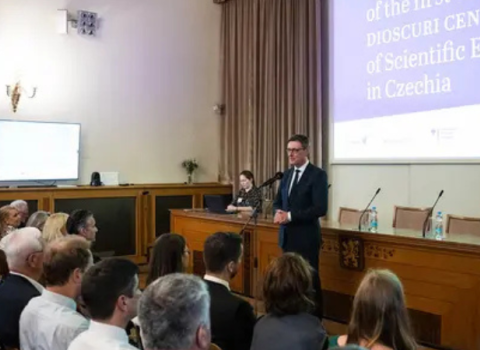One reason, perhaps, is that despite its size London has relatively little in the way of business incubators for start-up companies. The main incubators number just three: the London BioScience Innovation Centre (LBIC) at the Royal Veterinary College, the Imperial Incubator at Imperial College, and the new incubator at Queen Mary BioEnterprises (QMB) in east London. There are also smaller, internal, incubating clusters at the National Institute of Medical Research in northwest London and at St George’s Hospital in Tooting, south London.
“There’s not much choice,” says Ramsay Richmond, executive manager at QMB. “Across the Atlantic, San Diego has millions of square feet available,” he says. “Here there are just two providers with between them only some 100,000 square feet of space.”
Rob Johnson of Alacrita Consulting – based at LBIC – knows all about the problems of searching for space. He was formerly head of business development at a St George’s Hospital start-up company Onyvax, and twice came up against London’s barriers to lab expansion.
“The first time we needed access to a clean room,” he says. “We tried very, very hard to get more space at St George’s, but ended up setting up a satellite lab in LBIC.” A couple of years later, Onyvax, a specialist in cancer vaccines, was coming to the end of a clinical trial and looking at the possibilities for expansion. “At the time there were very few options for follow-on [post-incubation] companies in the central London area,” he says.
Even moving the company out of London would have been painful. At the time the company was around 10 years old, and had staff commuting in from all around the capital, so relocation would have meant losing many staff. And there was another barrier, one that non-science companies simply don’t have to face: moving finely tuned lab equipment. “It would have taken three man-years of work to revalidate the equipment,” he says. In the event, Onyvax’s clinical trial failed to meet expectations, and the company sold its intellectual property to a Korean company.
The reason for the shortage of lab space in London is not hard to find, and it’s a problem that many capital cities have in common: rents. London has had 35 years of a property bubble that has seen annual commercial rents for lab space rise to between £40 and £70 a square foot (roughly €500 to €840 per square metre) – around 30 per cent more than the surrounding Home Counties and about double the cost of locating in northern England.
Great research hospitals but almost no lab space
“London has great research hospitals but almost no laboratory space,” says Ramsay. And yet he firmly believes that there is demand for it, particularly as the academics behind new companies often have medical practices that commit them to London. He sees “huge IP potential” in diagnostics, medical technology and clinical research, hampered by a lack of “stickiness” – the ability to keep science jobs in London.
QMB, part of Queen Mary, University of London, is looking to buck the trend with its Innovation Centre next to the Royal London Hospital in the East End. This is a purpose-built laboratory and commercial space for start-up and early-stage life science companies.
The university encompasses Barts and the London School of Medicine and Dentistry, one of the UK’s top five medical and dental schools by quality of research, according to the most recent (2008) results from UK government’s Research Assessment Exercise, so life sciences are close to its heart.
And the university is not alone is in its desire to create and hold jobs in science: the London Development Agency has also identified the need for commercial lab space in the capital, and put up £7 million of the £24 million cost of building the Centre. The remaining £17 million came from the university, out of funds generated from its share of its spin-out ApaTech, which Baxter bought in March 2010 for up to $330 million.
While it was looking for space, Onyvax helped with the design of the Innovation Centre because, says Johnson, “we were quite likely to be one of the tenants”. He says that with the Innovation Centre now open, it’s “much easier now” for London life sciences start-ups.
Of the four classical steps in the life cycle of start-ups (informal moonlighting, incubation, follow-on space, science parks) to date the capital has only the steps one and two. The Innovation Centre aims to stand out by offering not just incubation space – typically for staffs of between 5 and 10 people – but also follow-on space that can accommodate up to 30, which Ramsay says makes it unique in London.
A further selling point is that the Innovation Centre is purpose-built for the kind of research that normal office space can’t handle, with computer-controlled ducting systems that will allow chemistry start-ups, for example.
The Innovation Centre’s first tenant was university spin-out Retroscreen Virology. Its accommodation includes 25 en-suite bedrooms equipped for overnight stays in a clinical trials unit. The ducting systems control both positive and negative air pressures between corridors and lab space, so none of the air is recycled around the building.
The latest tenant to join the Centre is iGene, which works in the emerging field of digital autopsy, a non-invasive autopsy procedure, using 3D imaging from MRI and CT scanning. The company has taken a three-year lease on just short of 1,000 square feet of space.





 A unique international forum for public research organisations and companies to connect their external engagement with strategic interests around their R&D system.
A unique international forum for public research organisations and companies to connect their external engagement with strategic interests around their R&D system.